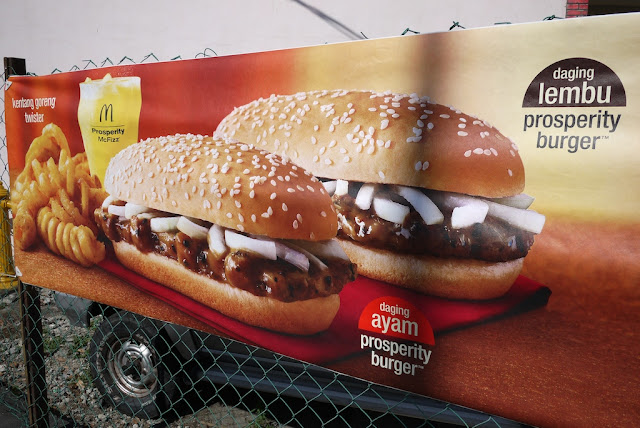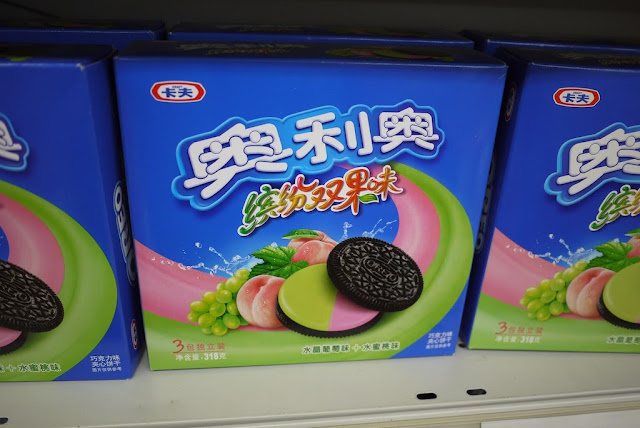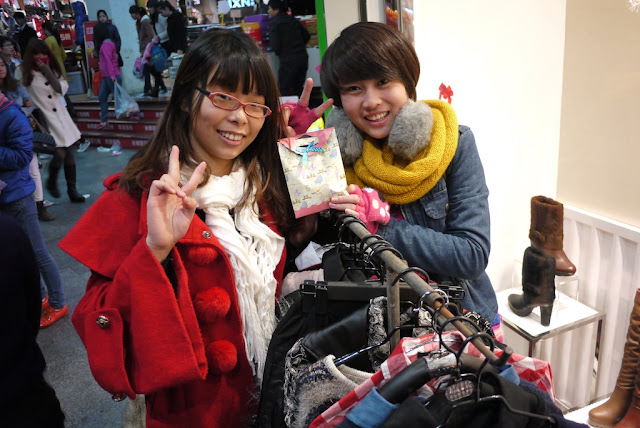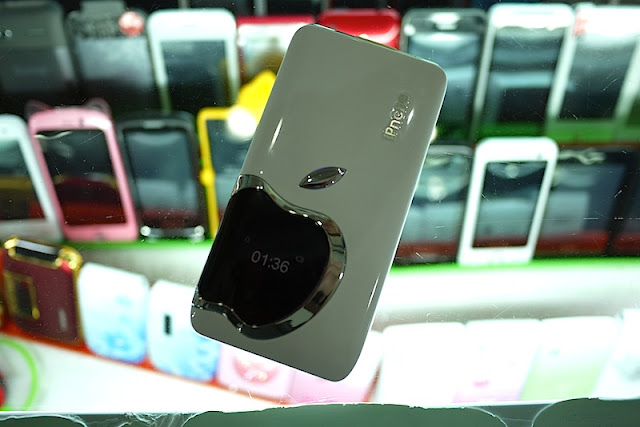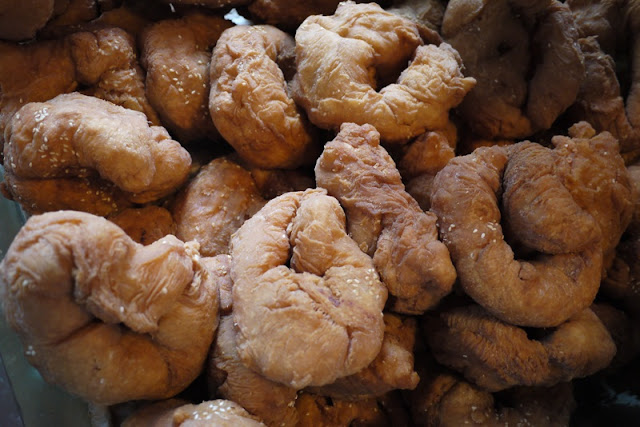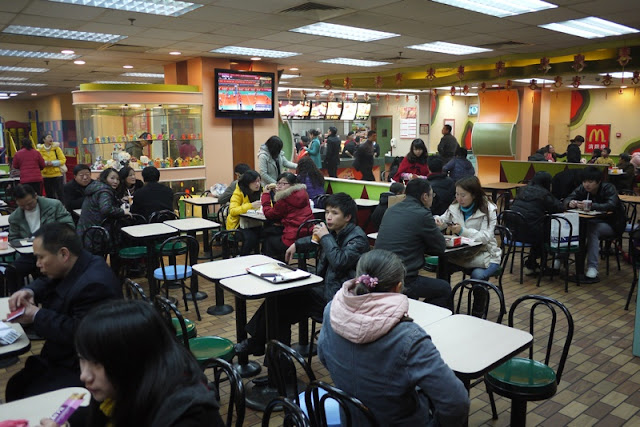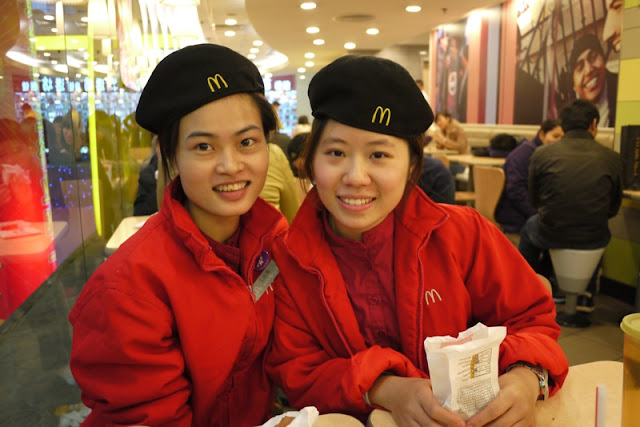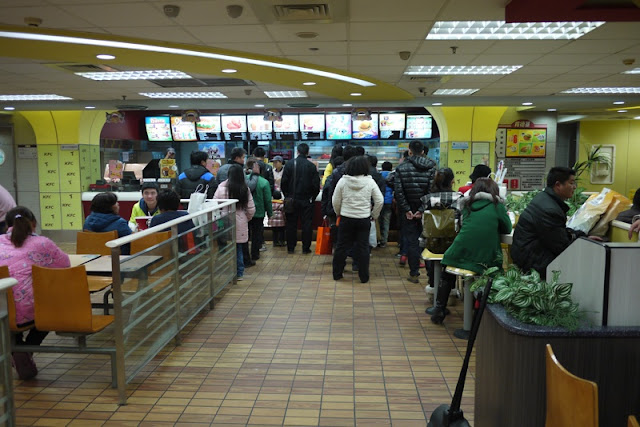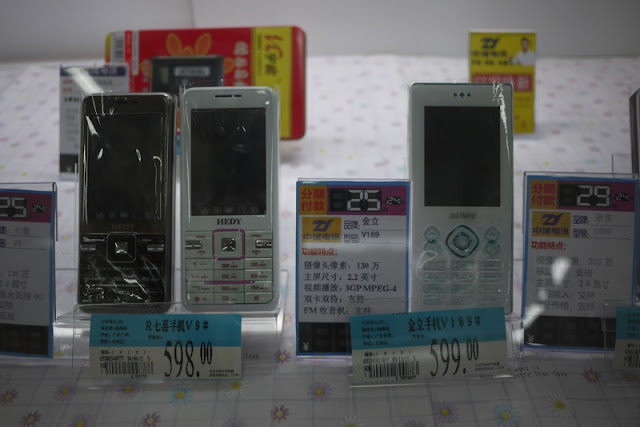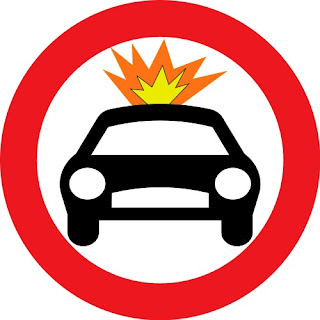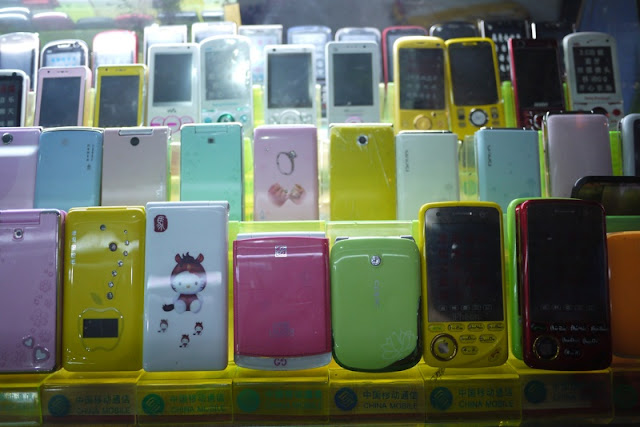[Update at end]
Just over a year ago, I saw this McDonald's advertisement in Penang, Malaysia:
I had written about McDonald's customizing its menu for local markets before, but this was the first time I saw the McDonald's Prosperity Burger -- a special offering for the Chinese New Year holiday. It's back in Malaysia this year, as announced on the McDonald's Malaysia website.
Adam Minter, author of Junkyard Planet, recently expressed his excitement over the Prosperity Burger's return:
He also provided a brief review:
Minter isn't alone in his opinion of the Prosperity Burger (see here and here), and he may be thrilled to hear it's available outside of Malaysia. For example, today in Hong Kong I saw an advertisement for the incomparable burger.
The McDonald's Hong Kong website has a similar promotion.
McDonald's in Hong Kong not only has the beef and chicken Prosperity Burgers found in Malaysia but also a pork version. Given that Islam is the state religion in Malaysia, it's not surprising McDonald's has not introduced the pork version there.
As the McDonald's Singapore website ...
and the McDonald's Indonesia website ...
... show, the Prosperity Burger is also available in Singapore and Indonesia. And it can be found in Brunei as well. McDonald's does not appear to have a website dedicated for Brunei, but in an article seeming more like an advertisement the Brunei Times noted the Prosperity Burger's "highly anticipated seasonal return":
Despite all of these countries offering the Prosperity Burger, most Chinese in the world will still have to seek another way to celebrate the Chinese New Year. McDonald's in mainland China does not offer the Prosperity Burger.
Perhaps people there can enjoy a McDonald's breakfast hot dog instead.
Update: Links to more recent posts here about the Prosperity Burger and other Lunar New Year burgers:
Just over a year ago, I saw this McDonald's advertisement in Penang, Malaysia:
I had written about McDonald's customizing its menu for local markets before, but this was the first time I saw the McDonald's Prosperity Burger -- a special offering for the Chinese New Year holiday. It's back in Malaysia this year, as announced on the McDonald's Malaysia website.
Adam Minter, author of Junkyard Planet, recently expressed his excitement over the Prosperity Burger's return:
Best part of Malaysia during Chinese New Year is the Double Prosperity Burger @ McD's. Cc @MaraHvistendahl pic.twitter.com/2NZ88Cu813
— Adam Minter (@AdamMinter) January 25, 2014
He also provided a brief review:
The greatness of the Double Prosperity Burger is the black pepper sauce. Incomparable, and better than it looks. pic.twitter.com/gXYxtCXfev
— Adam Minter (@AdamMinter) January 25, 2014
Minter isn't alone in his opinion of the Prosperity Burger (see here and here), and he may be thrilled to hear it's available outside of Malaysia. For example, today in Hong Kong I saw an advertisement for the incomparable burger.
The McDonald's Hong Kong website has a similar promotion.
McDonald's in Hong Kong not only has the beef and chicken Prosperity Burgers found in Malaysia but also a pork version. Given that Islam is the state religion in Malaysia, it's not surprising McDonald's has not introduced the pork version there.
As the McDonald's Singapore website ...
and the McDonald's Indonesia website ...
... show, the Prosperity Burger is also available in Singapore and Indonesia. And it can be found in Brunei as well. McDonald's does not appear to have a website dedicated for Brunei, but in an article seeming more like an advertisement the Brunei Times noted the Prosperity Burger's "highly anticipated seasonal return":
Nothing is more mouth-watering than the anticipation of biting into the Prosperity Burger’s succulent, juicy beef patty, dripping with lip-smacking black pepper sauce, topped with silvered onions on a sesame seed bun, and many Bruneians look forward to its return every year.Bruneians (and Adam Minter) rejoice!
Despite all of these countries offering the Prosperity Burger, most Chinese in the world will still have to seek another way to celebrate the Chinese New Year. McDonald's in mainland China does not offer the Prosperity Burger.
Perhaps people there can enjoy a McDonald's breakfast hot dog instead.
Update: Links to more recent posts here about the Prosperity Burger and other Lunar New Year burgers:

